
by Guest | Apr 18, 2024 | Being Well, Featured, Uncategorized, Work Well
What is your first memory of being stressed or upset? What was it about? Is it something that would upset you now, all these years later? Maybe, or maybe not. For me, it’s the time my brother knocked over my Lincoln Log house because he wanted one of the pieces I was using (though he would probably tell you a different story).
We all face challenges—even kids. Dare I say, especially kids, as they are still developing the understanding and skills to navigate their world and interactions with others. We as humans are not born with executive function, or the complex ability to think about future consequences, regulate our emotions and impulses, or organize tasks. These are all things that we learn from the environment around us. Most people would probably recognize early interactions and relationships as things that help form a child’s executive function. And they would be correct! The “serve and return” back-and-forth exchange of communication with caregivers is a necessary component in a child’s ability to feel secure in the world and to know how to operate within it. Their executive function allows them to process new anxieties, building resilience. When a child is resilient, the inevitable challenges of life aren’t quite as hard to manage.
So, you’re raising a child. You’re doing all the right things: the bedtime stories, the tummy time, the peek-a-boo. Your child is on the superhighway to mastering executive function! What else could possibly be done? Well, have you checked for lead in your home?
Like, the lead pipe from the board game Clue? The lead that infiltrated the water supply in Flint, Michigan in 2014? Yeah, that lead. You probably already know that lead is bad, but do you know why? Lead is a common and exceptionally potent neurotoxin that accumulates in bones and soft tissue. It damages the brain and central nervous system. In high enough doses, it can cause coma, convulsions, or death. Even in non-fatal cases of lead poisoning, children can be left with permanent brain damage: reduced IQ, reduced attention span, and increased antisocial behavior. In other words, lead can interfere with a child’s development of executive function.
There is no “safe” level of lead exposure, and young children are particularly vulnerable. As a child plays and crawls on the floor, any lead dust or particles on the ground get on their hands. And, as is a child’s nature, those hands go in their mouth. That easily, the dust of the lead paint on the walls is now in the child’s system. This is compounded by the fact that children’s bodies are far less efficient than adult bodies at filtering out lead.
The good news is that lead poisoning is preventable. You can easily find out if an item has lead in it with a home lead testing kit ordered online. Be aware of common sources of lead in the home. Lead-glazed ceramics, water pipes, imported spices and cosmetics, and children’s toys are all common places lead has been found. About 24% of homes and buildings built before 1978 have lead paint. (Note: DO NOT try to sand or scrape off lead paint! This will release more lead dust into the air and can be extremely harmful. If you have lead paint and want to make your home safer, paint over the existing paint and be mindful to clean up any chipping or flaking.) Some jobs and hobbies can also come with lead exposure. Demolition work, manufacturing, renovation, welding, casting or soldering (fishing weights, bullets, stained glass) can all leave lead dust on clothing that is later tracked into the home. To avoid this, leave shoes and work clothes outdoors, wash them, and take a shower before going about your home life. Creating a physically safe environment for your child, one that is absent of lead and other dangers, gives them the capacity to focus on developing as resilient young humans.
Whew! Lead averted. Now that that’s out of the way, we can go back to focusing on the bedtime stories and peek-a-boo…almost.
Lead isn’t the only household toxin. Other common sources of accidental poisonings in children are household cleaning products, personal care/cosmetic products, and analgesics (pain relievers). About 35,000 children go to the emergency room every year after getting into medications and vitamins left within their reach. Those gummy vitamins sure do look like candy, right? Imagine how tempting such a treat is to small hands. Protect your children from accidental poisoning; keep medications, vitamins, and cleaning products up, away, and out of reach. When possible, keep them locked. Never refer to medicine as “candy” to get your child to take it, and teach them to never eat something that wasn’t given to them by a trusted adult, even if it looks like candy.
Parents and caregivers: I know the list of everything you do for your kids is always growing, and it just grew a little more. Your hard work is recognized. All those veggies they don’t want to eat, the emotional guidance, late nights, and disputes over Lincoln Logs can be exhausting unlike anything else. But remember this: the environment you are creating, the support you provide, and your watchful eye are sculpting your child’s executive function, their whole health. And you’re doing an amazing job.
Written by: Sarah Ermer, MPH, CHES; Tillamook Family Counseling Center
Sources:
Centers for Disease Control and Prevention. (2021, October 29). Childhood Lead Poisoning
Prevention: Populations at Higher Risk. Retrieved from
www.cdc.gov/nceh/lead/prevention/populations.htm?CDC_AA_refVal=https%3A%2F%2F
www.cdc.gov%2Fnceh%2Flead%2Ftips.htm
Centers for Disease Control and Prevention. (2023, February 24). Early Brain Development.
Retrieved from www.cdc.gov/ncbddd/childdevelopment/early-brain-development.html
Centers for Disease Control and Prevention. (2022, May 17). Lead in Foods, Cosmetics,and Medicines. Retrieved from www.cdc.gov/nceh/lead/prevention/sources/foods-
cosmetics-medicines.htm
Centers for Disease Control and Prevention. (2022, February 2). Lead in Jobs, Hobbies, or
Other Activities. Retrieved from www.cdc.gov/nceh/lead/prevention/sources/jobs-
hobbies-activities.htm
World Health Organization. (2023, August 11). Lead poisoning. World Health
Organization.https://www.who.int/news-room/fact-sheets/detail/lead-poisoning-and-
health
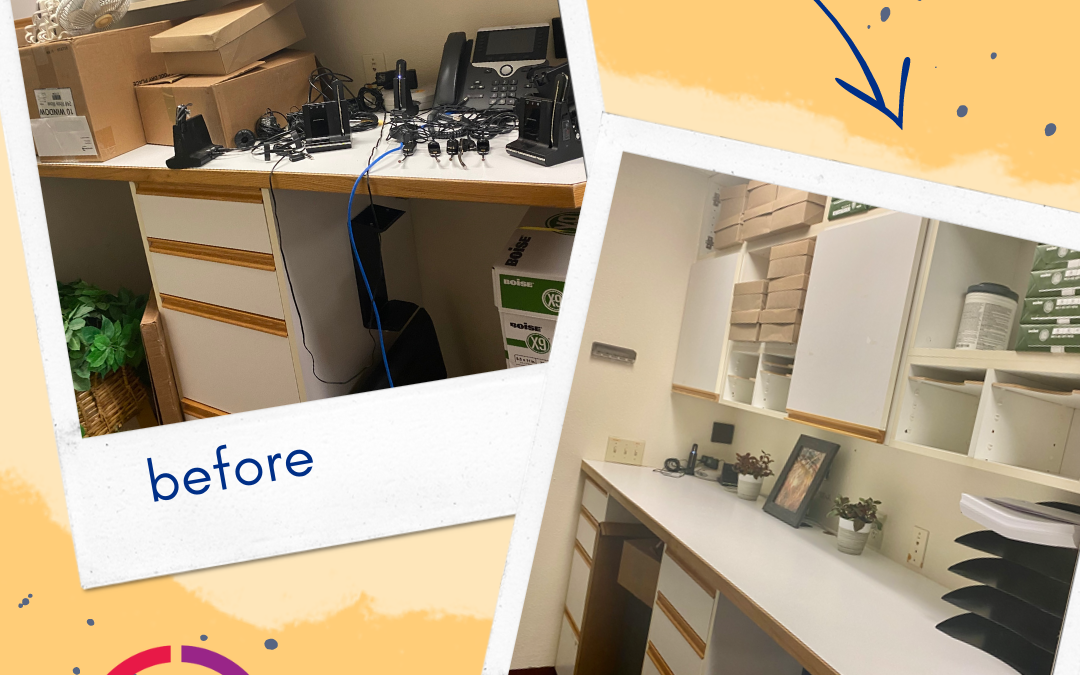
by Michelle | Mar 23, 2024 | Being Well, Featured, Uncategorized, Work Well
Imagine yourself living and working in a space that only sparks joy. This is a goal of our Tillamook County Wellness initiative. It is also the philosophy behind decluttering, a proven approach for improving well-being. Popularized by Japanese organizing consultant, Marie Kondo, decluttering has become a winning strategy for identifying what truly matters in one’s life – keeping the things that spark joy and getting rid of what doesn’t.
Many of us are drawn to Spring cleaning. A time of renewal, Spring feels like the perfect window to get things in order and start with a fresh, clean slate. Decluttering isn’t just for our home environment; it is good for our workspaces too. As part of their Blue Zones well-being initiative, Adventist Health Tillamook is encouraging employees and leaders to declutter their workspaces. The process involves not just removing old, unwanted items but determining what brings value. As you can see by one team’s before and after photos, clearing clutter can transform the spaces in which we spend most of our day from stress-inducing chaos to calm, welcoming environments where people can cultivate a sense of purpose and meaning.
Whether it is our home or work environment, most of us have accumulated things we no longer need. I love reading. My home is filled with many, many partially read books. Kondo suggests that a half-read book is a book that gave you what you needed in the pages that were read. If the book sparked joy, you’d have finished reading it. So, rather than feeling obligated to finish reading every book, we can take heart that we were fulfilled from what we did read and pass that book along for someone else to enjoy.
Kondo says, “People cannot change their habits without first changing their way of thinking.” When we get stuck thinking a certain way, it can get in the way of what we really need. Taking time to deliberately ask if something is serving us is helpful when it clears the debris to make way for what is most meaningful. Disorder is not only visually unpleasant but it can create a kind of mental disorder where we find it difficult to prioritize, plan and stay focused. The little bit of energy it takes to declutter can free up a lot of energy for what really matters.
The process of getting rid of things can also help us identify patterns that are not serving us. I have a lot of shoes; a lot of clothing, in general. If I’m being honest, much of what I own no longer fits me and there aren’t enough days in the year to wear it all even if it did. When we are collecting and holding on to things, it’s a good idea to ask ourselves why it is so important for us to hold onto them? There is often a deeper insight into this. As a child, I wore hand-me-downs and always felt like a fashion flop. I wanted to fit in and have the latest styles like the popular kids. This mindset has carried over into my adult life. Is it serving me now – and did it serve me as a child? No. Being objectively curious about what is behind our habits can be a springboard to improving our mental well-being. As Kondo so wisely states, “When we really delve into the reasons for why we can’t let something go, there are only two: an attachment to the past or a fear for the future.” This is why people like Steve Jobs wear the same clothes every day. Not having to sift through the closet each morning, frees up their mind for more creative pursuits
Decluttering isn’t just about “stuff.” It can be about getting rid of apps on our phone, emails in our inbox, and relationships that drain us. Kondo gives the following advice. “When you come across something that you cannot part with, think carefully about its true purpose in your life.” You may be surprised to realize how much of what you have already served its purpose. “By acknowledging their contribution and letting them go with gratitude, you will be able to truly put the things you own, and your life, in order,” says Kondo.
It can feel overwhelming to tackle cleaning out the attic, garage, or, in my case, the bedroom closet. Breaking it down into smaller tasks can help. For proven tips and tricks, check out Marie Kondo’s book, The Life-Changing Magic of Tidying Up, or any other of her books, which you can also check out from your local library branch. You can also watch “Tidying Up with Marie Kondo” on Netflix.
What will you declutter this Spring? I’ll be tackling my closet!
Written by Michelle Jenck, M.Ed., Tillamook County Wellness Coordinator, Certified Behavior Change Coach
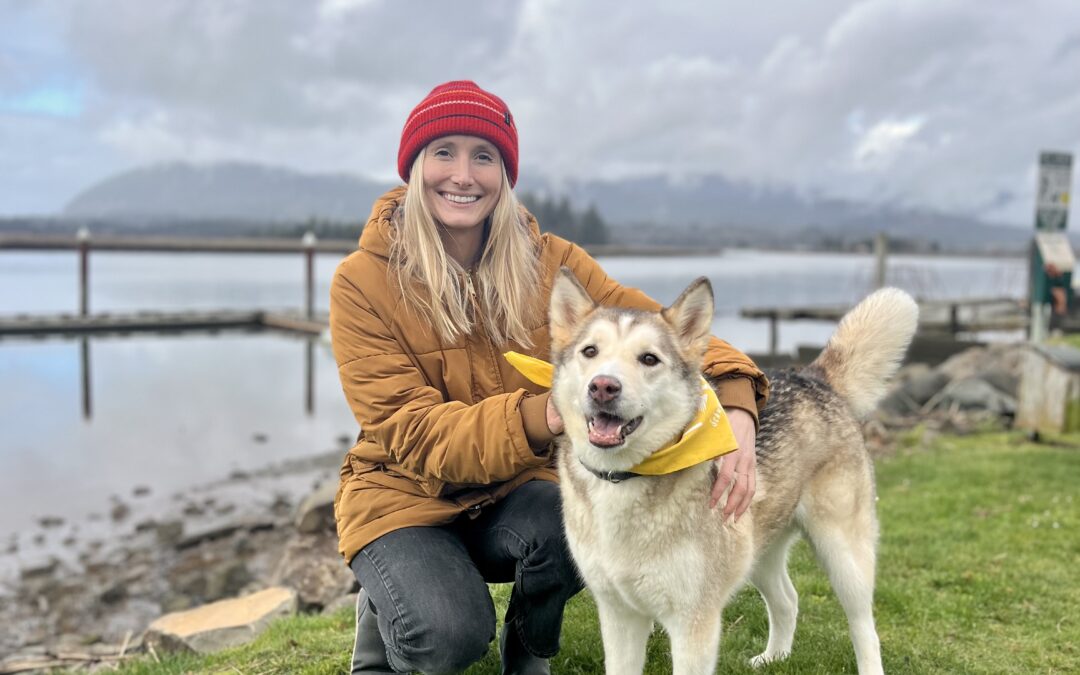
by Guest | Feb 20, 2024 | Being Well, Eat Well, Featured, Uncategorized, Why I'm In, Work Well
“WHY I’M IN …” An interview with Mari Tasche, Oregon Health & Science University
What drew you/your organization to partner with Tillamook County Wellness?
When first introduced to Tillamook County Wellness, I was inspired by the work of the committees and felt that TCW aligned with my passion for improving the wellness and quality of life of others, particularly those made vulnerable by current systems. I have always been actively involved in my community, whether coaching youth soccer or coordinating a community-wide couch to 5k running group. As an exercise physiologist looking to transition into public health and plant my roots on the north coast, TCW provided a great opportunity to understand the region’s needs and get involved in efforts to address community health.
What, if any, changes have you seen come about as a result of this work?
Improving the health and wellness of a county is challenging work and truly takes a village. TCW is a unifying force that brings people and organizations together to share knowledge, leverage resources, and provide support. This strengthens our connections, creates unity, and fosters collective progress for the betterment of our community. I have seen many organizations coordinate and collaborate on projects, programs, and initiatives they might not have otherwise pursued together. This coalition has also taken ownership of the community health needs assessment and improvement plan to address the region’s top health and social needs. Efforts include evaluating and refocusing the work of committees, pursuing or supporting grants, establishing or strengthening partnerships, and broadening community outreach and engagement.
What have you learned from being involved in this work?
I have learned that opportunities are endless if you make the effort to reach out. Many people want to see this county thrive and want to contribute their part to make that happen. It is inspiring and fuels my optimism for this work. I have also learned that this work is like climbing a mountain with no top. It’s endless, but if you enjoy what you are doing, it doesn’t feel like a daunting task- and don’t forget to celebrate the small steps!
What are your hopes for this work as it relates to you/your organization?
My role has continued to evolve since joining a few years ago, and I strive to find my niche and how to best contribute my time and resources to TCW. As I wrap up my master’s degree in public health this fall, I am looking to align my final projects with TCW initiatives and develop relevant content and materials to drive this work forward. As a regionally based employee with the Oregon Rural Practice-based Research Network at OHSU, I aim to pursue future opportunities for cross-over and collaboration.
What are your hopes for this work as it relates to changing community health in Tillamook County.
Changing community health takes a multifaceted and dynamic approach. I hope that TCW continues to address this challenge holistically by strengthening a diverse network with a unified message, comprehensive strategy, and county-wide framework that can meet the needs of every individual and help them live their best, healthy lives.
Is there anything else you’d like to share?
I appreciate being a part of this coalition and look forward to what we can accomplish in the coming years.
For more local health and wellness information, visit www.tillamookcountywellness.org or follow Tillamook County Wellness on Facebook and Instagram.
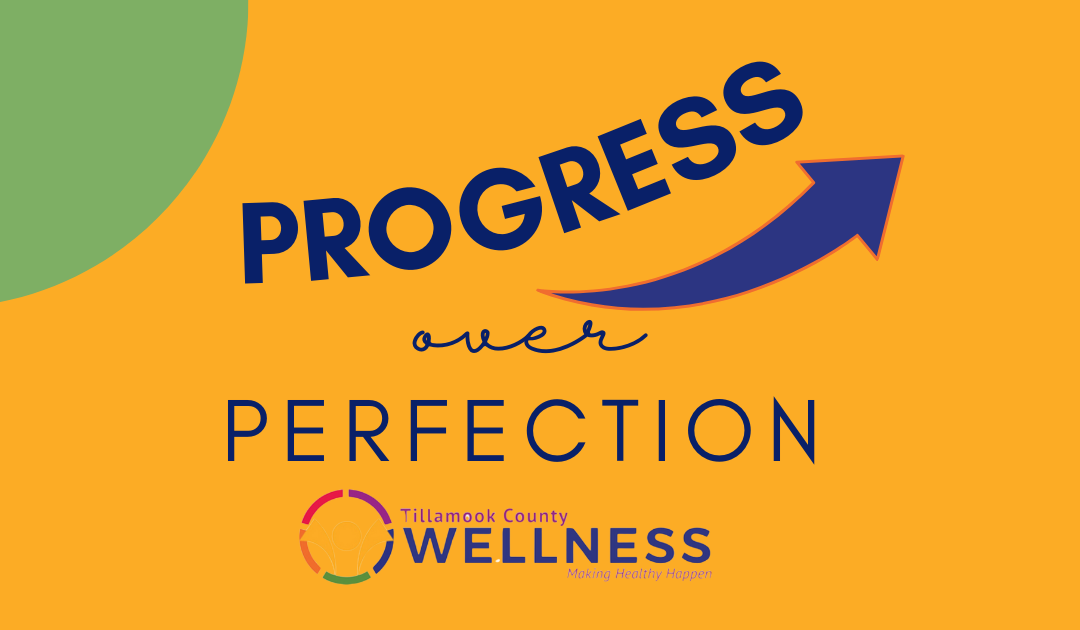
by Guest | Feb 12, 2024 | Being Well, Featured, Uncategorized, Work Well
By Guest Author: Emery Edwards
I’m a perfectionist. I always have been, and I probably always will be in some capacity. So, my health improvement journey has been a struggle. Somewhere in the 21 years before I started trying to change my life, I had gotten this idea that if I couldn’t do it perfectly the first time, I couldn’t do it at all. I’m sure some of you have felt similarly, especially when it comes to your health. There have been countless times where I’d stuck to my goals for a week or two, but I am inevitably confronted with a birthday party, a night out, or anything that might challenge your newly formed habits. I’ve always felt it’s a zero-sum game- I default on my healthy habits one time, and my progress is null, and I might as well give up. Many of us who have embarked on the journey of improving holistic health have experienced this, and it’s okay. What will be more damaging than one day, one week, or one month of falling back, is if you believe that the progress you’ve made up until that point means nothing because you weren’t perfect.
This is where progress over perfection comes in. Recognizing that you are making progress, but you’re not perfect, is the way I’ve been able to transform my habits over the last 6 months. Instead of chastising myself for not exercising one day or eating something that does not serve my body, I recognize that overcoming these habits is a longer journey than I had been led to believe. Crash diets, unrealistic societal expectations, ‘lose weight quick’ schemes, and the like have warped my thoughts about health for a decade, and I know I’m not alone in this. If it has been instilled in you for so long, it will inevitably take more than a couple months to fully change your mindset. Giving yourself grace in this journey of feeling better is more important than absolute perfection. But you must want to feel better to make these changes sustainable.
It takes dedication to make that progress and change your lifestyle. I started with upping my fiber and protein intake through whole foods and reduced the simple carbohydrates and sugars in my diet. It took me mere weeks to feel more present in my body, have more energy, and improve my sleep quality. It took me months, however, to make these practices a daily habit. Instead of giving up when I gave in to the residual cravings, I would wake up the next day and continue with the goals I had been working towards. My world does not stop when I eat a chicken strip, and I promise that yours doesn’t either. Maybe pair that chicken strip with some roasted vegetables like brussels sprouts, broccoli, or a simple garden salad to make it more nutritious. It’s all about adding what you need to satisfy the craving in a healthier way, and after you eat it, move on to meeting your goals. The name of the game is progress, not perfection. But when I tell you, I went from needing a nap in the middle of the day to function to having the energy to take me through the entire day without a yawn, I am telling you the truth.
I am only 6 months into my progress over perfection journey, so I’m no expert. But what I will say is I have never in my life felt as good as I do today, and every day gets even better. I started with my eating because I had no energy to introduce exercise into my routine, now I have too much energy to sleep if I don’t exercise. It’s a beautiful problem to have. I would not have gotten this far if I had given up the first time that I ate something I told myself I wouldn’t. Which probably happened within a week of starting the journey if I’m honest. The name of this game is grace- give it to yourself, to others, and remember that it’s all about your overall progress, not being perfect.
For more local health and wellness information, visit www.tillamookcountywellness.org or follow Tillamook County Wellness on Facebook and Instagram.
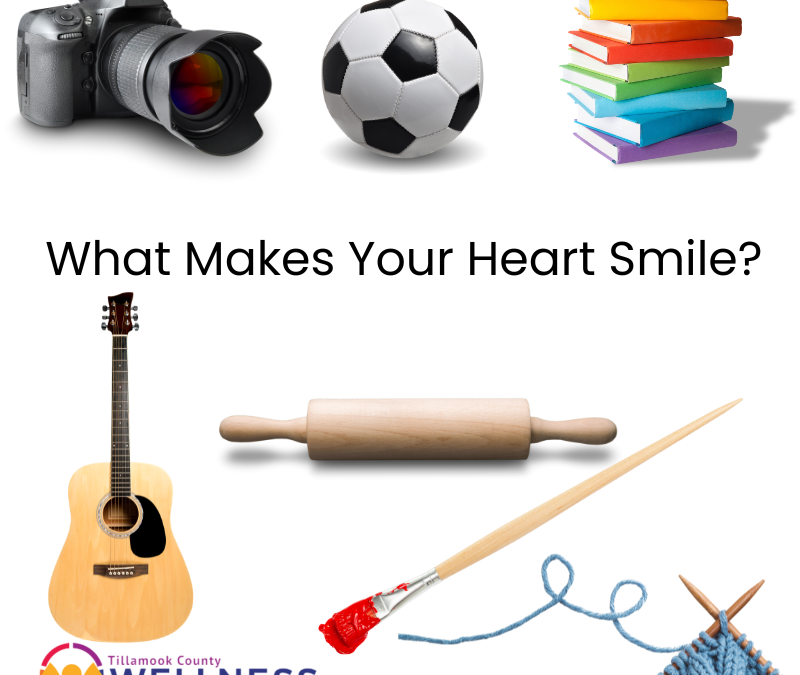
by Michelle | Feb 5, 2024 | Being Well, Featured, Work Well
At the start of a new year, many of us think about restarting exercise regimens, meal prepping and other weight-loss oriented goals. While losing weight is good for our self-image and our health, it can often be difficult to achieve. If we aren’t successful, it can cause us to “throw in the towel” – at least until the start of the next new year. What if there are other pathways to become healthier, happier versions of ourselves?
What is often overlooked is that our health goals are usually more about how we feel than how we look. We want to be able to do the things we used to do, be happier, have more energy and a greater sense of meaning in our lives. While running a 5K or eating the recommended daily servings of vegetables will help us achieve those goals, there are other ways we can get there.
Think back to when you were 7, 11, or 20 years old. What brought you joy? Were there hobbies or activities you enjoyed doing, that made you feel good about yourself; where you got to put your unique skills to the test, or share your gifts with others? As a child I loved reading and journaling from a very young age. By the time I graduated from college, I had abandoned both of those pastimes. I simply hadn’t had time between going to school and working full time. Once I began to reintroduce those activities, I felt my old self coming back. And that prompted more awareness of what I needed to feel fulfilled. And what was draining my energy.
Maybe it’s time to get out your golf clubs, tune that instrument or dust off your art supplies. Or, maybe this is the time to make your someday start today. What is the thing you have caught yourself saying multiple times? “Someday I am going to ‘do the 52 hikes challenge,’ or ‘grow a vegetable garden’ or ‘learn how to crochet.’” There are free, local resources to help you get started with all of these activities. Our local library system offers Mango, a free language learning app. They even have a “library of things,” like binoculars to go bird watching or tools to start that woodworking hobby. The possibilities are endless.
I know what you’re thinking. This is all well and good but I do not have time for such frivolities. The truth is that most of us are spending at least some of our disposable time on social media, streaming, or watching television. If we reprioritized 30 minutes a day of time spent doing passive activities and dedicated it to pursuing a hobby, we could experience significantly more joy and meaning in our lives.
Here are a few tips for success:
- Conduct an inventory of your favorite hobbies, past and present
- Consider what you could realistically reintroduce into your current schedule
- Notice activities others do that you admire or find yourself being curious about
- Research what it would take to start a new activity and break down the process into small, manageable chunks (for example, if you want to learn to crochet, reach out to Latimer Quilt Factory and ask about lessons, groups, mentors or other ways to get started)
- Schedule time for your hobby/activity so you are more likely to keep it a priority
- Invite a friend to join you
- Share your favorite hobbies on social media or at info@tillamookcountywellness.org
Written by Michelle Jenck, M.Ed., Certified Behavior Change Coach & Tillamook County Wellness Coordinator
For more local health and wellness information, visit www.tillamookcountywellness.org or follow Tillamook County Wellness on Facebook and Instagram.
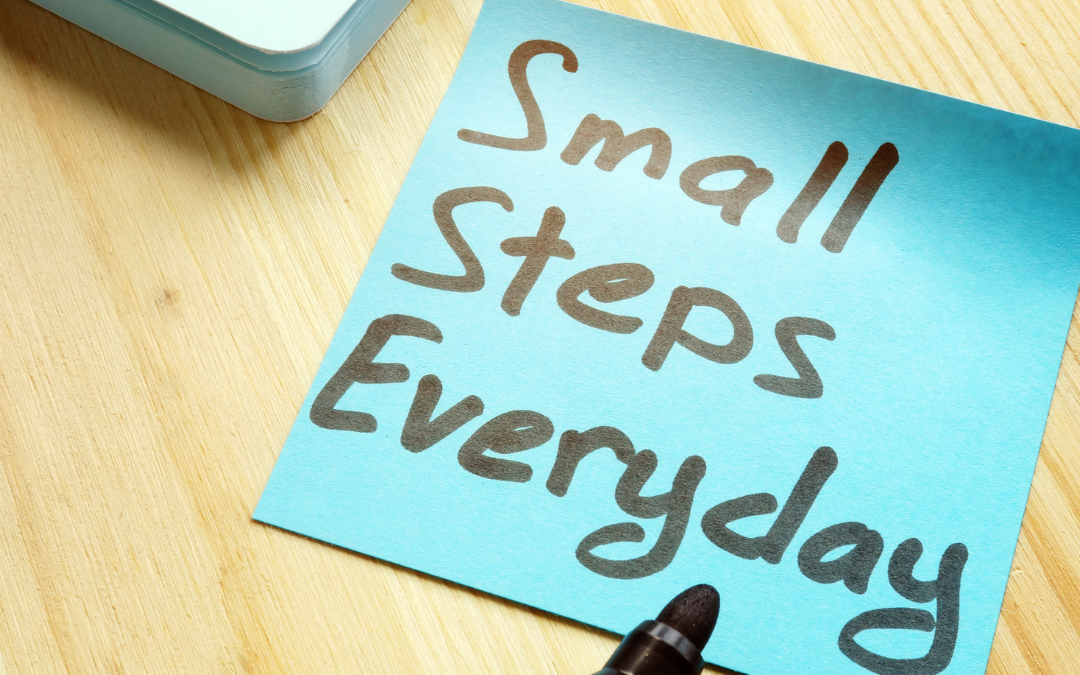
by Michelle | Jan 25, 2024 | Being Well, Featured, Move Well, Uncategorized, Work Well
Intro to Behavior Change, Part 1
Every day we hear the results of another study, telling us what is making us unhealthy. Eat this, don’t eat that. Move like this, not like that. There are, of course, good reasons to become educated about making healthier choices. We are on an unsustainable track both for our own health and for the economic health of our nation. In all reality, our health care crisis – the skyrocketing cost to treat preventable, chronic disease – is a greater threat to our survival than global climate change. As with all things, though, we have made the solution far too complicated for the average person to comprehend.
Let’s get down to the fundamentals. First, we simply have to become more aware of our own habits. How do I feel when I eat this and don’t eat that? How do I feel when I walk up a flight of stairs? How much energy do I have? If the answers to these questions are not the ones you’d like, then it is probably time to start making some changes.
Change is hard. Crazy hard. It’s really inconvenient. That’s how we got into this mess in the first place. It is human nature to take the path of least resistance. It takes time and effort to change the way we live our lives. For most of us, this is where we end up – in a state of knowing we need to do something but not believing that we can really do anything about it. To be successful, we need to make the changes to our habits small, easy-to-adopt, and enjoyable.
Behavior Change 101, Part 2
Awareness. This is where it all starts. We have to stop and look within ourselves to even begin to understand what is and isn’t working. This goes for health and nutrition but also for relationships, self-esteem, work performance, you name it. What is the famous saying? The first step is admitting you have a problem.
You don’t have to become a Yogi (yoga instructor, not the bear) to become aware. You don’t have to take special classes (although that might help). You don’t have to change the kind of person you are (although you probably will in the end). You just need to be open to the idea of changing.
We see things more clearly when we take a step back and give them our undivided attention. Take a few moments each day to breathe. Just be. Relax. In doing so, the busyness of the world, the noise of our self-talk, the daily to do list, they all disappear and we are simply left with ourselves and the truth. Layers of thought, emotion, and even traumatic events are often responsible for the “dis-ease” that causes disease. Without going through this process, it may not matter what changes we make to our nutrition or exercise habits. Our bodies seek balance. This applies to our emotional state as well. When we are out of balance, there are a whole host of physiological processes that go off-line as well.
Unfortunately, the typical American lifestyle does not lend itself to mind-body balance. It can seem overwhelming to understand what is out of balance and what we need to do about it. This is where awareness is key. At some point, most of us have tried to determine how many calories, grams of protein, fats or carbohydrates or how many minutes of high or low intensity exercise we should be getting each day. And, statistics show that this hasn’t worked out so well for most of us . . . at all.
So, how do we identify and make the changes we need to make? Pay attention to your own body and mind. What you think and feel, what you read, and what you hear others say all provide clues if you are tuned in. Listen to that voice in your head, that gut instinct that kicks in and says, “Hey, that’s what I need to do. I can do that.” I call it the When-Harry-Met-Sally-Moment – “I’ll have what she’s having.” Pay attention to what inspires you and follow that thread.
Tips for Successful Behavior Change, Part 3
Why we want to make changes is almost as important as what we want to change. The “why” often determines our chances for success. If we are making a change for our spouse or boss, or as a quick fix (think high school reunion), we might not be as emotionally invested as we need to be successful over the long term. You need to have good reasons to make any lasting change. Maybe it is to be around to see your kids or grandkids grow up or maybe it is about improving your quality of life. Whatever it is, it needs to be meaningful to you.
Setting SMART goals is key to successful behavior change. SMART is an acronym for research-based characteristics that significantly increase the likelihood of reaching one’s goals. They should be:
- Specific
- Measurable
- Attainable
- Relevant
- Time-Bound
For example, if I want to walk 2 miles a day but am currently completely sedentary, I need to break down my goal into manageable pieces. I also need to be realistic. How far can I, and more importantly, will I, walk each day. Maybe it is just a daily walk to my mailbox for the first week. Then, I can walk to the end of the block, then 3 blocks, and so on until I have achieved my goal. It is important to set a time frame for each level of goal attainment. This can be daily or weekly. It needs to be short enough to generate immediate success but also long enough to form a new habit as a foundation for the next step and that usually takes about 8-10 weeks.
Work with your strengths and interests when approaching changes. If you like to cook, then it makes sense to find healthy recipes you would enjoy making. If you hate cooking, it will be important to simplify what nutrition changes you are making so that you can still be successful. It can be as simple as choosing the prepared veggie tray and a container of hummus from the grocery store. This principle is especially important when it comes to physical activity. If you enjoy being outdoors, consider walking or hiking. If you like people, music or dancing, you could join a group fitness class. If you want something more mindful, try Tai Chi, Qigong or Yoga. The key is to look for ways to integrate a positive, healthy change with your personality, interests and strengths.
One of the reasons people struggle with behavior change is because they have been unsuccessful in the past. Three common reasons for this are 1) Setting unrealistic goals 2) Giving up after the first setback, or 3) Taking on too many changes at once.
To avoid these, it is important to set a narrow list of ridiculously small goals. This allows us to celebrate mini victories which perpetuate future successes. BJ Fogg, a researcher at Stanford University, calls these “Tiny Habits.” He uses an example for someone who wants to develop the habit of flossing their teeth. He suggests flossing one tooth each night after brushing your teeth. Just one tooth. This is based on the fact that a 3 second action of flossing one tooth is perceived as much more doable than the 30 second action of flossing all of our teeth and, therefore, we are more likely to stick with and succeed at the development of this new habit. As sad as this example is, he is 100% right (and he has the research to back that up.) This says a lot about human nature and explains a lot when it comes to why behavior change is so difficult.
To summarize, there are some tricks to successful behavior change:
- Become aware of what you want to change and why
- Set SMART goals
- Make changes that fit your personality, strengths and values
- Start small (REALLY small) and build on your successes
Written by Michelle Jenck, M.Ed., Certified Behavior Change Coach
For more local health and wellness information, visit www.tillamookcountywellness.org or follow Tillamook County Wellness on Facebook and Instagram.






